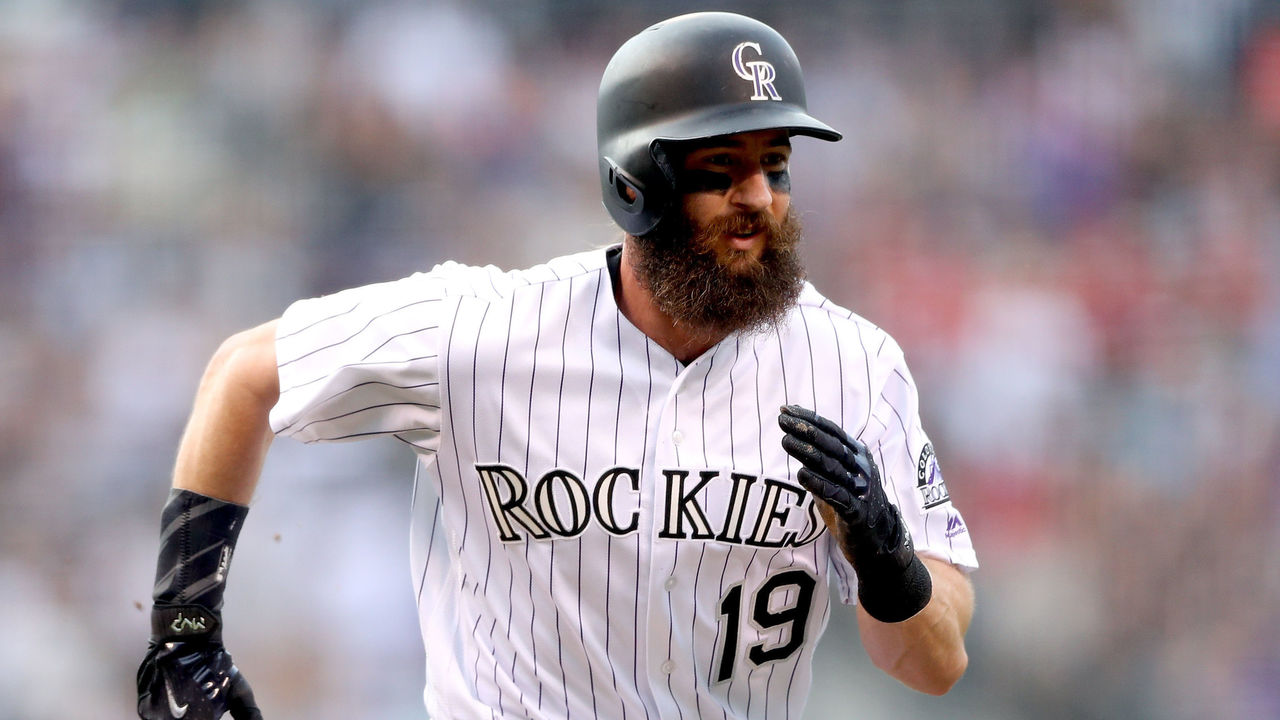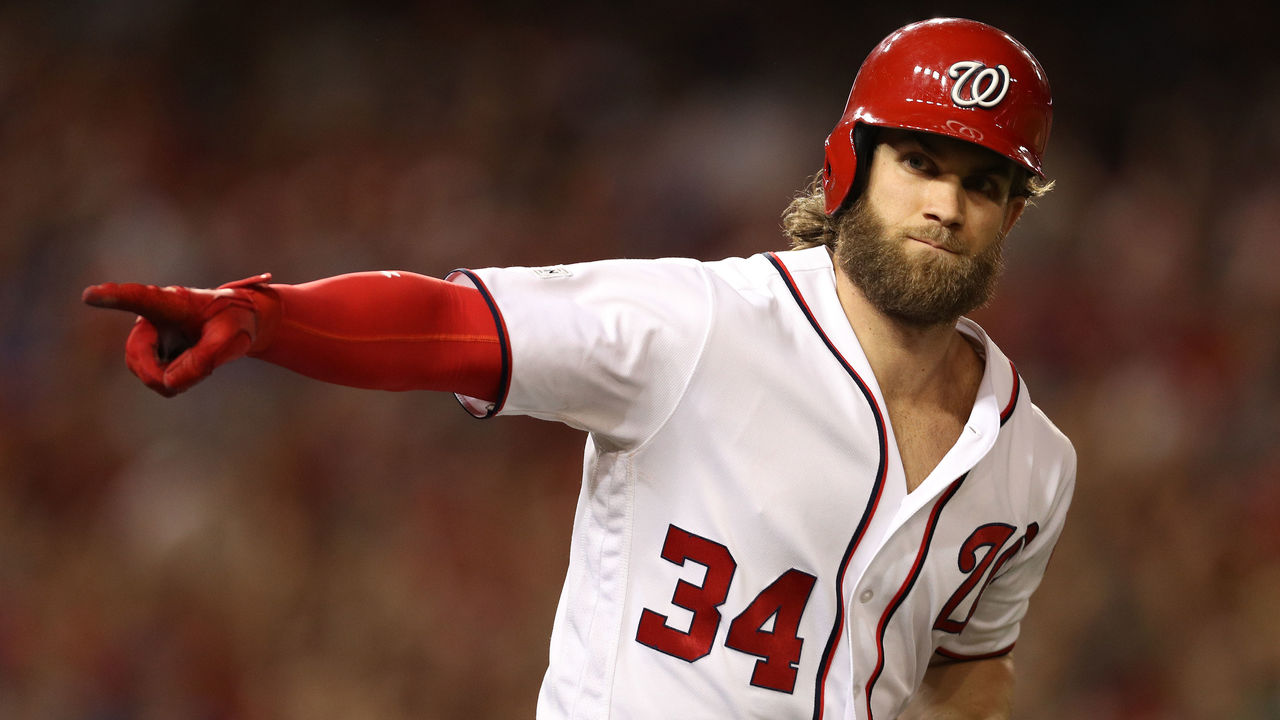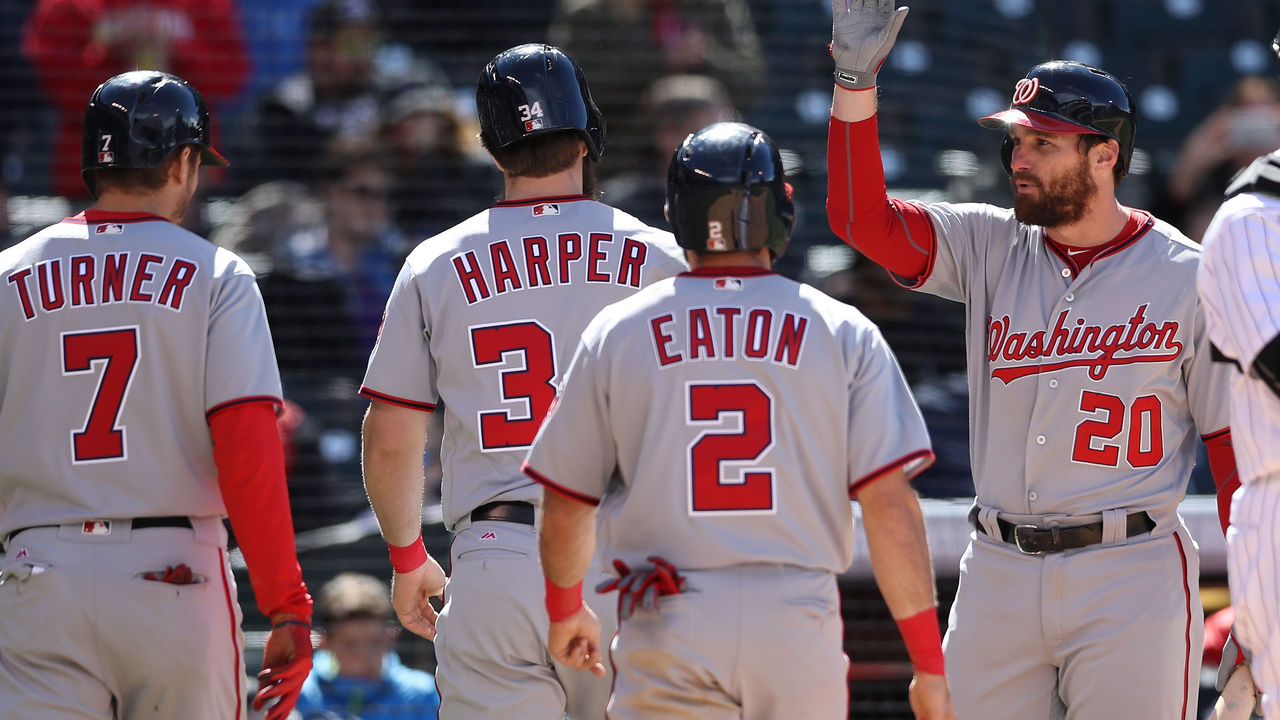How would Bryce Harper rank among baseball's leadoff hitters?
A generational talent like Washington Nationals right fielder Bryce Harper can be useful wherever he hits in a lineup. Traditionally, his power profile and ability to drive in baserunners positions him for the middle spots - third or clean-up - but that may not always be the case in 2018.
Rookie Nationals manager Dave Martinez said his star slugger could spend some time hitting atop the team's lineup, which would certainly be a different look. It may also prove a savvy choice, depending on how you view the role of the leadoff batter.
Which leads us to ...
What makes a good leadoff hitter in 2018?

Gone are the days where teams focus on speed and nothing else at the leadoff position. But, maybe it was always a bit of a mistake to jump to the conclusion that speediness was the top quality. Hall of Famer Rickey Henderson is the prototype of base-stealers everywhere, and he was the ideal leadoff hitter to boot. His ability to get on base was the real reason he is among the most effective table-setters in MLB history. The stolen bases were simply gravy.
Henderson posted a career OBP of .401 across parts of 24 seasons. That's an extreme number, especially in relation to today's game. Charlie Blackmon, who was largely seen as baseball's best leadoff batter in 2017, posted an OBP of .399.
More and more, the mold is changing, as The Ringer's Zach Kram wrote about a year ago. Blackmon has speed - he stole 43 bases in 2015 - but he also has mad pop. He hit 37 homers last season and set a new RBI record for a leadoff hitter, driving in 103 runs from the top spot in the lineup. Houston Astros outfielder George Springer wasn't far behind as he stroked 34 long balls.
Their success suggests that hitters with power aren't automatically ushered to the middle of the lineup. It certainly helps that Blackmon and Springer play on teams with deep offenses. A team like the Cincinnati Reds probably isn't going to move Joey Votto, its strongest OBP option, to the top of the lineup anytime soon because he's seen as the best run producer. But it's a simple premise. If your leadoff hitter gets on base more often, your team is generating run-scoring opportunities at a greater frequency. Perhaps the Reds should consider Votto in the one-hole.
Where does Harper rank among leadoff hitters?

Assuming on-base percentage is the best indicator of a great leadoff hitter, Harper is actually better-suited to bat first than anyone else who is projected to do so based on his numbers from a year ago:
| Rank | Name | Team | 2017 OBP |
|---|---|---|---|
| 1 | Bryce Harper | WAS | .413 |
| 2 | Charlie Blackmon | COL | .399 |
| 3 | Brandon Nimmo | NYM | .379 |
| 4 | Jon Jay | KC | .374 |
| 5 | Cesar Hernandez | PHI | .373 |
| 6 | Christian Yelich | MIL | .369 |
| 7 | George Springer | HOU | .367 |
| 8 | Dexter Fowler | STL | .363 |
| 9 | Brian Dozier | MIN | .359 |
| 10 | Chris Taylor | LAD | .354 |
| 11 | David Peralta | ARZ | .352 |
| 12 | Brett Gardner | NYY | .350 |
| 13 | Ender Inciarte | ATL | .350 |
| 14 | Delino DeShields | TEX | .347 |
| 15 | Joe Panik | SF | .347 |
| 16 | Mookie Betts | BOS | .344 |
| 17 | Dee Gordon | SEA | .341 |
| 18 | Josh Harrison | PIT | .339 |
| 19 | Yoan Moncada | CHW | .338 |
| 20 | Francisco Lindor | CLE | .337 |
| 21 | Denard Span | TB | .329 |
| 22 | Tim Beckham | BAL | .328 |
| 23 | Ian Happ | CHC | .328 |
| 24 | Marcus Semien | OAK | .325 |
| 25 | Curtis Granderson | TOR | .323 |
| 26 | Ian Kinsler | LAA | .313 |
| 27 | Manuel Margot | SD | .313 |
| 28 | Billy Hamilton | CIN | .299 |
| 29 | Lewis Brinson | MIA | .236 |
| 30 | Leonys Martin | DET | .232 |
(Roster projections courtesy: RosterResource)
A small disclaimer is likely needed here. Lewis Brinson appeared in only 21 games at the major-league level. In 76 games in Triple-A, he had an OBP of .400, so he may be much better. Also victims of small samples are Brandon Nimmo (69 games) and Yoan Moncada (54 games). Leonys Martin only played in 49 contests, but he holds a career OBP of .300 over 621 games so his placement is probably accurate.
But is he the best option in Washington?

Harper led the Nationals in OBP in 2017 (though injuries limited him to only 111 games), so by that metric alone, yes. He also led the team in slugging percentage (.595), which may make him more appealing at his customary spot at third. It's not like the other options are that far behind him in terms of OBP.
Before he got injured, Adam Eaton had posted a .393 OBP through 23 games. That was certainly above his career clip (.358), but not exponentially. MVP candidate Anthony Rendon got on base more than 40 percent of the time (.403) and Daniel Murphy posted a rate of .384. In fact, Eaton is currently penciled in as the Nationals' projected leadoff man - presuming health. If he follows up his early-season performance from a year ago, this will serve as an excellent decision.
It's interesting that the man who best fits the traditional profile of the speed-first leadoff batter, Trea Turner, is penciled in as the second hitter. Turner hasn't shown himself to be counter-productive at getting on base (like Billy Hamilton), but he's not the OBP machine that his teammates are.
If you subscribe to the notion that a team's best contact hitter should bat second, then Murphy or Rendon should be here, which would leave Turner as the odd man out. The logic then dictates that the fastest player (unquestionably Turner) should be given enough opportunities to exploit his speed so the best power hitters can drive him in.
The Nationals are stacked, which gives them extra flexibility when constructing the lineup. With Rendon, Murphy, and Ryan Zimmerman lurking, Martinez can afford to bat Harper first without seriously compromising his team's RBI chances. With his skill set, Harper is the best option wherever he's positioned in the lineup, and batting first is simply going to maximize his exposure and give him the most opportunities to swing the bat.
(Photos courtesy: Getty Images)